Archive for the ‘Lean’ Category
Lean and Supply Chain Sensitivity
 At every turn, lean has increased profits in the factory. Its best trick is to look at the work through a time lens, see wasted time, and get rid of it.
At every turn, lean has increased profits in the factory. Its best trick is to look at the work through a time lens, see wasted time, and get rid of it.
Work is blocked by problems. You watch the work to spot blockages in the form of piles, otherwise known as inventory. When you find a pile, you know the problem is one operation downstream.
As lean works its magic, inventory is reduced, which decreases carrying costs. More importantly, however, it also reduces the time to see a problem. Whether the problem is related to quality, delivery or resources, everything stops immediately. It’s clear what to fix, and there’s incentive to fix it quickly because with lean, the factory is more sensitive to problems.
What works in the factory will also work in the supply chain, and that’s where lean is going.
Missing Element of Lean – Assembly Magazine article
 With its strong focus on waste reduction of processes, lean has been a savior for those who’ve made it out of the great recession. But what’s next? I argue the next level of savings will come from adding a product focus to lean’s well-developed process focus. For the complete Assembly Magazine article (one page), click here.
With its strong focus on waste reduction of processes, lean has been a savior for those who’ve made it out of the great recession. But what’s next? I argue the next level of savings will come from adding a product focus to lean’s well-developed process focus. For the complete Assembly Magazine article (one page), click here.
The design community has the biggest lever
 In sourcing, out sourcing, off shoring, on shoring – the manufacturing debate rages. So what’s the big deal? Jobs – the foundation of an economy. Jobs pay for things, important things like food, schools, and healthcare. No jobs, no economy. The end.
In sourcing, out sourcing, off shoring, on shoring – the manufacturing debate rages. So what’s the big deal? Jobs – the foundation of an economy. Jobs pay for things, important things like food, schools, and healthcare. No jobs, no economy. The end.
What does lean, the most successful manufacturing business methodology, have to say about all this? Lean’s fundamental:
a
Make it where you sell it
a
because the shortest supply chains are least wasteful. Dig the ore in-country, make the steel in-country, forge it, machine it, and sell it in-country. With, of course, some qualifiers, some important ifs:
- If in-country demand is high enough to warrant the investment
- If your company is big enough to pull it off
- If quality can be assured.
All good, but I’m discouraged by what lean does not say:
- Regardless of the country, engage the design community to reduce material cost and waste
- Regardless of the factory, engage design community to make your factory output like two
- Regardless of the industry, engage design community to reduce part count.
We all agree the design community has the biggest influence on cost and waste, yet they’re not part of the lean equation. That’s wasteful. That violates a fundamental. That makes me sad.
Let’s put aside our where-to-make-it arguments for a bit, and, wherever you make product,
a
Engage the design community in lean.
Imagination’s Obituary
 Anytown, Any Country – Imagination died on Friday, May 14, 2010, following a long and courageous battle with continuous improvement.
Anytown, Any Country – Imagination died on Friday, May 14, 2010, following a long and courageous battle with continuous improvement.
Imagination was born in a time long ago in a place we no longer recognize. Nurtured by her parents Individualism and Free Thinking, Imagination had a wonderful childhood. As a youngster, she was known to make significant contributions to science and technology. Galileo, a long time friend of Imagination, credited her with new thinking about our solar system as well as the invention that made it all happen – the astounding telescope. To the end, Galileo’s support of Imagination never wavered, even after his relationship with her led to the incarceration that shortened his career.
Stories like these are commonplace throughout history. Selflessly, Imagination helped many people throughout her life. She took a behind-the-scenes approach to her work, and never sought credit. She was known to be involved with the most important thinking of our generations including: the Round Earth Theory, the Theory of Relativity, the internal combustion engine, the first lunar landing, and Velcro.
In recent years her health declined as the two new thinking systems, lean and Six Sigma, tricked companies into severely constraining their thinking, and, eventually, there was no longer a place for her. Though she battled valiantly, she finally succumbed to their rhetoric.
In lieu of flowers, memorial donations may be made to The Anti-Lean and Six Sigma Foundation.
Click this link for information on Mike’s upcoming workshop on Systematic DFMA Deployment
Who owns cost?
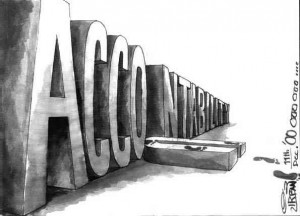 I’ve heard product cost is designed in; I’ve heard it happens at the early stages of product development; And, I’ve heard, once designed in, cost is difficult get out. I’m sure you’ve heard this before. Nothing new here. But, is it true? Is cost really designed in? Why do I ask? Because we don’t behave like it’s true. Because was it was true, the Design community would be responsible for product costs. And they’re not.
I’ve heard product cost is designed in; I’ve heard it happens at the early stages of product development; And, I’ve heard, once designed in, cost is difficult get out. I’m sure you’ve heard this before. Nothing new here. But, is it true? Is cost really designed in? Why do I ask? Because we don’t behave like it’s true. Because was it was true, the Design community would be responsible for product costs. And they’re not.
Who gets flogged when the cost of new products are too high? Manufacturing. Who does not? Design. Who gets stuck running cost reduction projects when costs are too high? Manufacturing. Who does not? Design. Who gets the honor of running kaizens when value stream maps don’t have enough value? Manufacturing. Who designs out the value and designs in the cost? Design. (That’s why they’re called Design.) If Design designs it in, why is the cost albatross hung around Manufacturing’s neck?
It sucks to be a manufacturing engineer – all the responsibility to reduce cost without the authority to do it. The manufacturing engineers’ call to arms –
a
Reduce cost, but don’t change anything!
a
Say that out loud. Reduce the cost, but don’t change anything. How stupid is that? We’ll it’s pretty stupid, but it happens every day. And why constrain the manufacturing engineers like that? Because they don’t have the authority to change the product design – only Design can do that. So you’re saying Manufacturing is responsible for product cost, but they cannot change the very thing that creates all the cost? Yes.
What would life be like if we behaved as if Design was responsible for product cost? To start, Design would present product cost data at new product development gate reviews. Design would hang their heads when product costs were higher than the cost target, and they would be held accountable for redesigning the product and meeting the cost target. (They would also be given the tools, time, and training to do the work.)
Going forward, Design would understand the elements of product that create the most cost. And how would they know this? First, they would spend some time on the production floor. (I know this is a little passé, but it still works.) Second, they would do Design for Assembly (DFA) in a hands-on, part-by-part, piece-by-piece way. No kidding, they would handle all the parts themselves, assemble them with production tooling, and score the design with DFA. That’s right, Design would do DFA. The D in DFA does not stand for Advanced Manufacturing, Operations, Supplier Quality, Purchasing, or Industrial Engineering. The D stands for Design.
I know your manufacturing engineers are in favor of rightly burdening Design with responsibility for product cost. But, your Lean Leaders should be the loudest advocates. Imagine if your Design organization designed new products with half the parts and half the material cost, and your Lean Leaders reduced value waste from there. Check that, Lean Leaders should not be the loudest advocates. Your stockholders should be.
Click this link for information on Mike’s upcoming workshop on Systematic DFMA Deployment
Custom Model, exploring customized manufacturing (Mechanical Engineering Magazine)
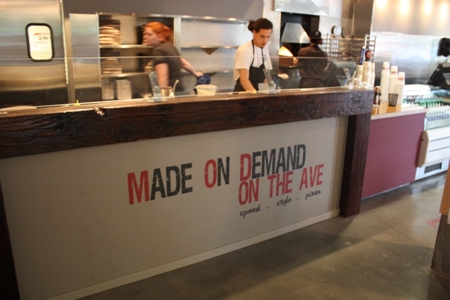 By reducing parts count and easing assembly, one plasma cutter maker explores customized manufacturing.
By reducing parts count and easing assembly, one plasma cutter maker explores customized manufacturing.
By Jean Thilmany, Associate Editor, Mechanical Engineering Magazine
Ask nearly any engineer or manufacturer about customized manufacturing and—to a person—they’ll all say the same thing: Have you heard the Dell story?
Dell is offered up again and again as the number one example of customized manufacturing done right and done successfully. Shortly after its founding in 1984, Dell began what it calls a configure-to-order approach to manufacturing. The computer company lets customers customize their own computers on the Dell Web site. Buyers select how much memory and disk space they desire and the resulting computer is manufactured and shipped to them.
The approach has helped the computer maker see skyrocket growth. Last year, it held the second-highest spot for desktops and laptops shipped, behind Hewlett Packard, according to market-share numbers from research firm International Data Corp. in Framingham, Mass.
Manufacturers—particularly electronics manufacturers—have long been taking notice. Many of them are investigating how the configure-to-order model could be put to use at their own companies. And some of them have implemented the method—along with the necessary software to get the job done—with great success.
Take Hypertherm Inc. of Hanover, N.H., maker of plasma metal cutting equipment. The company has recently started allowing customers to choose online from ten CNC Edge Pro product configurations, up from three configurations in the former product line, said John Sobr, head designer on the project.
Hypertherm recently redesigned its plasma metal cutting equipment to reduce part count by 27 percent while doubling the number of inputs available. Customers can now choose from ten product configurations.
DFMA to Control Controller Design – Design2Part Magazine
Design for Manufacture and Assembly is reported to improve CNC performance, modularity, durability, and serviceability
When Hypertherm (www.hypertherm.com) was getting ready to design its next generation of metal cutting CNCs, the engineering team’s goal was to make improvements. But the controllers, which automate the Hanover, New Hampshire-based company’s advanced cutting tools and systems, were already well-accepted in the marketplace and highly regarded in the industry. So why redesign? And how would they go about it?
See this link for the full article – Using DFMA to Control Controller Design
Pareto’s Three Lenses for Product Design
 Axiom 1 – Time is short, so make sure you’re working on the most important stuff.
Axiom 1 – Time is short, so make sure you’re working on the most important stuff.
Axiom 2 – You can’t design out what you can’t see.
In product development, these two axioms can keep you out of trouble. They’re two sides of the same coin, but I’ll describe them one at a time and hope it comes together in the end.
With Axiom 1, how do you make sure you’re working on the most important stuff? We all know it’s function first – no learning there. But, sorry design engineers, it doesn’t end with function. You must also design for lean, for cost, and factory floor space. Great. More things to design for. Didn’t you say time was short? How the hell am I going to design for all that?
Now onto the seeing business of Axiom 2. If we agree that lean, cost, and factory floor space are the right stuff, we must “see it” if we are to design it out. See lean? See cost? See factory floor space? You’re nuts. How do you expect us to do that?
Pareto to the rescue – use Pareto charts to identify the most important stuff, to prioritize the work. With Pareto, it’s simple: work on the biggest bars at the expense of the smaller ones. But, Paretos of what?
There is no such thing as a clean sheet design – all new product designs have a lineage. A new design is based on an existing design, a baseline design, with improvements made in several areas to realize more features or better function defined by the product specification. The Pareto charts are created from the baseline design to allow you to see the things to design out (Axiom 2). But what lenses to use to see lean, cost, and factory floor space?
Here are Pareto’s three lenses so see what must be seen:
To lean out lean out your factory, design out the parts. Parts create waste and part count is the surrogate for lean.
To design out cost, measure cost. Cost is the surrogate for cost.
To design out factory floor space, measure assembly time. Since factory floor space scales with assembly time, assembly time is the surrogate for factory floor space.
Now that your design engineers have created the right Pareto charts and can see with the right glasses, they’re ready to focus their efforts on the most important stuff. No boiling the ocean here. For lean, focus on part count of subassembly 1; for cost, focus on the cost of subassemblies 2 and 4; for floor space, focus on assembly time of subassembly 5. Leave the others alone.
Focus is important and difficult, but Pareto can help you see the light.
Looking for the next evolution of lean? Look back.
 Many have achieved great success with lean – it’s all over the web. Companies have done 5S, standard work, value stream mapping, and flow-pull-perfection. Waste in value streams has reduced from 95% to 80%, which is magical; productivity gains have been excellent; and costs have dropped dramatically. But the question on everyone’s mind – what’s next? The blogs, articles, and papers are speculating on the question and proposing theories, all of which have merit. But I think we’re asking the wrong question.
Many have achieved great success with lean – it’s all over the web. Companies have done 5S, standard work, value stream mapping, and flow-pull-perfection. Waste in value streams has reduced from 95% to 80%, which is magical; productivity gains have been excellent; and costs have dropped dramatically. But the question on everyone’s mind – what’s next? The blogs, articles, and papers are speculating on the question and proposing theories, all of which have merit. But I think we’re asking the wrong question.
Instead of looking forward for the next evolution of lean, we should look back. We must take a fundamental, base-level look at our factories, and ask what did we miss? We must de-evolve our thinking about our factories, and break down their DNA – like mapping the factory genome.
Though lean has achieved radical success, it has not achieved fundamental reduction in factory complexity. Heresy? Let me explain. Lean helped us migrate from batch building to single piece flow. With batch building, a group of parts are processed at machine A, then, when all are finished, the whole family moves to machine B. With single piece flow, a part is processed at machine A then she moves, without her sisters, directly to machine B, resulting in big savings. But in both cases, the fundamental part flow, a surrogate for factory complexity, remains unchanged – parts move from machine A to machine B. Lean did not change it. Lean has taken the bends out of our factory flow and squeezed machines together, but that’s continuous improvement. We’ve got good signals, we’ve got cell-based metrics, and 15 minute pitches. Again, continuous improvement. But what about discontinuous improvement? How can we fundamentally reduce factory complexity?
Factories are what they are because of the parts flowing through them.
Factory flow and complexity are governed by the genetics of the parts. In that way, parts are the building blocks of the factory genome. From the machines and tools to the people, handling equipment, and the incoming power – they’re all shaped by the parts’ genetics. Heavy parts, heavy duty cranes; complex parts, complex flows; big parts, big factories. When we want to make a fundamental change in bacteria to make a vaccine, we change the genetics. When we want to make a fruit immune to a natural enemy or resistant to cold of an unnatural habitat, we change the genetics. So, it follows, if fundamental change in factory complexity is the objective, the factory genome should change.
Don’t try to simplify the factory directly, change the parts to let the factory simplify itself.
Discontinuous reduction of factory complexity is the result of something – changing the products that flow through the factory. Only design engineers can do that. Only design engineers can eliminate features on the design so machine B is not required. Only design engineers can redesign the product to eliminate the part altogether – no more need for machine A or B. In both cases, the design engineer did what lean could not.
Lean is a powerful tool, and I’m an advocate. But we missed an important part of the lean family. We drove right by. We had the chance to engage the design community in lean, but we did not. Let’s get in the car, drive back to the design community, and pick them up. We’ll tell them anything they want to hear, just as long as they get in the car. Then, as fast as we can, we’ll drive them to the lean pool party. Because as Darwin knew, diversity is powerful, powerful enough to mutate lean into a strain that can help us survive in the future.
DFA and Lean – A Most Powerful One-Two Punch
 Lean is all about parts. Don’t think so? What do your manufacturing processes make? Parts. What do your suppliers ship you? Parts. What do you put into inventory? Parts. What do your shelves hold? Parts. What is your supply chain all about? Parts.
Lean is all about parts. Don’t think so? What do your manufacturing processes make? Parts. What do your suppliers ship you? Parts. What do you put into inventory? Parts. What do your shelves hold? Parts. What is your supply chain all about? Parts.
Still not convinced parts are the key? Take a look at the seven wastes and add “of parts” to the end of each one. Here is what it looks like:
- Waste of overproduction (of parts)
- Waste of time on hand – waiting (for parts)
- Waste in transportation (of parts)
- Waste of processing itself (of parts)
- Waste of stock on hand – inventory (of parts)
- Waste of movement (from parts)
- Waste of making defective products (made of parts)
And look at Suzaki’s cartoons. (Click them to enlarge.) What do you see? Parts.
Take out the parts and the waste is not reduced, it’s eliminated. Let’s do a thought experiment, and pretend your product had 50% fewer parts. (I know it’s a stretch.) What would your factory look like? How about your supply chain? There would be: fewer parts to ship, fewer to receive, fewer to move, fewer to store, fewer to handle, fewer opportunities to wait for late parts, and fewer opportunities for incorrect assembly. Loosen your thinking a bit more, and the benefits broaden: fewer suppliers, fewer supplier qualifications, fewer late payments; fewer supplier quality issues, and fewer expensive black belt projects. Most importantly, however, may be the reduction in the transactions, e.g., work in process tracking, labor reporting, material cost tracking, inventory control and valuation, BOMs, routings, backflushing, work orders, and engineering changes.
However, there is a big problem with the thought experiment — there is no one to design out the parts. Since company leadership does not thrust greatness on the design community, design engineers do not have to participate in lean. No one makes them do DFA-driven part count reduction to compliment lean. Don’t think you need the design community? Ask your best manufacturing engineer to write an engineering change to eliminates parts, and see where it goes — nowhere. No design engineer, no design change. No design change, no part elimination.
It’s staggering to think of the savings that would be achieved with the powerful pairing of DFA and lean. It would go like this: The design community would create a low waste design on which the lean community would squeeze out the remaining waste. It’s like the thought experiment; a new product with 50% fewer parts is given to the lean folks, and they lean out the low waste value stream from there. DFA and lean make such a powerful one-two punch because they hit both sides of the waste equation.
DFA eliminates parts, and lean reduces waste from the ones that remain.
There are no technical reasons that prevent DFA and lean from being done together, but there are real failure modes that get in the way. The failure modes are emotional, organizational, and cultural in nature, and are all about people. For example, shared responsibility for design and manufacturing typically resides in the organizational stratosphere – above the VP or Senior VP levels. And because of the failure modes’ nature (organizational, cultural), the countermeasures are largely company-specific.
What’s in the way of your company making the DFA/lean thought experiment a reality?
Product Design – the most powerful (and missing) element of lean
Lean has been beneficial for many companies, helping improve competitiveness and profitability. But, lean has not been nearly as effective as it can be because there is a missing ingredient – product design. Where lean can reduce the waste of making and moving parts, product design can eliminate the parts altogether; where lean can reduce setup times for big machines, product design can change the parts so they no longer need the big machines; where lean can reduce inventory, product design can eliminate it by designing out parts; where lean can make the supply chain more efficient, product design can radically shorten it by designing out the long lead time elements.
The power of product design is even more evident when considering the breakdown of product cost. Here is some data from Nick Dewhurst taken from multiple-hundred DFMA analyses showing the typical cost breakdown of products.
Of the three buckets of cost, material cost is by far the largest 74%, and this is where product development shines. Product design can eliminate 40 to 50% of material cost resulting in radical cost savings. Lean cannot. I will go a bit further and say that material cost reductions are largely off limits to the lean folks since it requires fundamental product changes.
Side note – Probably most surprising about cost breakdown data is labor cost is only 4%. Why we move our manufacturing to “low cost countires” to chase 50% labor reductions to net a whopping 2% cost reduction is beyond me, but that’s for a different post.
Let’s face it – material cost reduction is where it’s at, and lean does not have the toolbox to reduce material cost. There’s no mystery here. What is mysterious, however, is that companies looking to survive at all costs are not pulling the biggest lever at their disposal – product design. Here is a bit of old data from Ford showing that Product Design has the biggest lever on cost. We’ve know this for a long time, but we still don’t do it.
Clearly, the best approach of is to combine the power of product design with lean. It goes like this: the engineers design a low cost, low waste product that is introduced to the production line, and the lean folks improve efficiency and reduce cost from there. We’ve got the lean part down, but not the product design part.
There are two things in the way of designing low cost, low waste products in a way that helps take lean to the next level. First, product development teams don’t know how to do the work. To overcome this, train them in DFMA. Second, and most important, company leaders don’t give the product development teams the tools, time, and training to do the work. Company leaders won’t take the time to do the work because they think it will delay product launches. Also, they don’t want to invest in the tools and training because the cost is too high, even though a little math shows the investment is more than paid back with the first product launch. To fix that, educate them on the methods, the resource needs, and the savings.
Good luck.



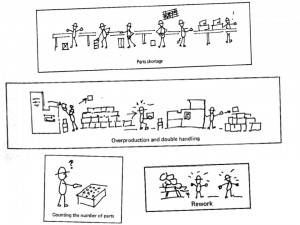
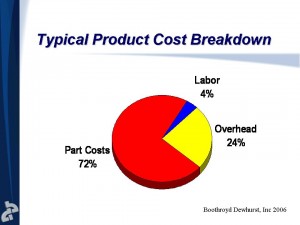
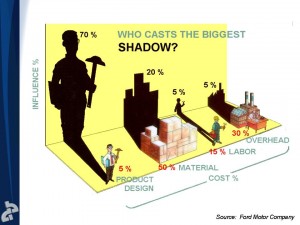
 Mike Shipulski
Mike Shipulski